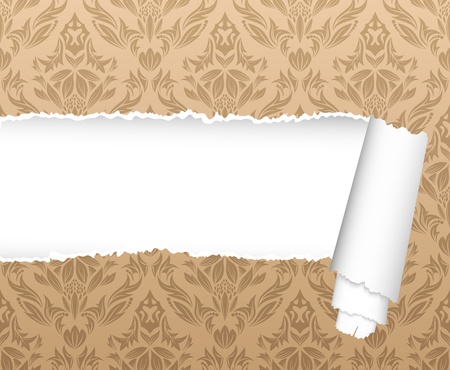Understanding Wallpaper Materials
When it comes to wallpaper maintenance and preservation, a good understanding of the materials gracing your walls is essential. British homes are renowned for their eclectic mix of wallpaper types, from the grand Victorian flocked designs that whisper tales of yesteryear, to today’s sleek, washable vinyl finishes that suit busy modern living. Each type brings its own charm—and its own care requirements.
Traditional wallpapers, such as flocked and embossed papers, are often found in period properties across the UK. Flocked wallpaper features raised, velvety patterns that add a tactile sense of luxury but tend to attract dust and require gentle handling. Embossed papers, with their textured surfaces, lend depth and interest but can hide dust and grime in their crevices. These vintage styles typically need more delicate care compared to contemporary materials.
On the other end of the spectrum are modern wallpapers like non-woven and vinyl-coated varieties, which have become popular in new builds and renovated spaces alike. These are designed with practicality in mind—many are splash-proof or fully washable, making them ideal for kitchens, bathrooms, or family rooms where life’s little mishaps are common.
The composition of each wallpaper greatly influences how you should clean and preserve it. For instance, natural fibre wallpapers such as grasscloth or silk are best left untouched by water, while wipeable vinyls can take a damp cloth without complaint. By identifying what type of wallpaper you have—be it a heritage print in a Georgian terrace or a bold mural in a modern flat—you’ll be better equipped to maintain its beauty and longevity.
2. Regular Cleaning and Dusting
Keeping your wallpaper looking fresh, whether it’s a cherished vintage pattern or a newly hung textured design, relies heavily on regular cleaning and dusting. In the UK, where homes often contend with a mix of damp weather and central heating, dust can quickly settle into even the most pristine corners. It’s important to adopt gentle yet effective routines that suit both traditional and modern wallpaper types, using items you likely already have around the house.
Everyday Dusting Techniques
Start by dusting your wallpaper every few weeks. Use a soft microfibre cloth or a feather duster – both are common in British households and are gentle enough for delicate patterns. For wallpapers with deeper textures or embossed finishes, a clean, dry paintbrush (preferably one used only for cleaning) helps reach crevices without disturbing the surface.
Choosing the Right Tools
| Wallpaper Type | Recommended Tool |
|---|---|
| Flat Paper | Microfibre Cloth or Feather Duster |
| Textured/Embossed | Soft Paintbrush or Vacuum (with brush attachment) |
| Vintage (Delicate) | Dry Lint-Free Cloth |
Gentle Cleaning Solutions
If your wallpaper needs more than just dusting, opt for a mild solution. Mix a drop of washing-up liquid with lukewarm water – this is safe for most modern wallpapers but always do a patch test first on an inconspicuous area. Dip a soft sponge in the mixture, wring it well so it’s barely damp, and gently dab (don’t rub) any marks. For vintage wallpapers, avoid water altogether; instead, use a dry cleaning sponge or eraser sponge designed specifically for wallpaper care.
Quick Tips for Preserving Texture and Colour
- Avoid harsh chemicals or abrasive cleaners as they can damage both old and new papers.
- Work from the bottom up to prevent streaks.
- Immediately blot any spills with kitchen roll rather than rubbing to maintain texture integrity.
Caring for your wallpaper doesn’t require specialist products—just thoughtful techniques and ordinary household items. With regular attention, your walls will continue to add warmth and character to your home for years to come.

3. Dealing with Stains and Marks
Life in a British home often brings with it a certain charm—cosy cups of tea, wellies by the door, and the occasional splash or muddy footprint on your wallpaper. Whether you’re caring for a vintage William Morris pattern or a sleek modern print, knowing how to tackle common stains without damaging the wall covering is essential. Start by identifying the type of stain: tea splashes are perhaps the most quintessentially British mishap, while muddy marks from outdoor adventures or fingerprints from little ones are equally familiar.
Spot-Treating Tea Splashes
If you notice a fresh tea stain, act quickly but gently. Blot—not rub—the area with a clean, dry cloth to absorb as much liquid as possible. For older or more stubborn stains, lightly dampen a soft sponge with lukewarm water and add a drop of mild washing-up liquid. Test on an inconspicuous area first; some vintage wallpapers may be sensitive even to gentle soap. Carefully dab the stain, working from the outside in to avoid spreading, then blot dry with kitchen towel.
Managing Muddy Prints
Muddy marks require patience. Allow any mud to dry completely before attempting removal; rubbing wet mud can grind it into the fibres or damage delicate finishes. Once dry, use a soft brush (like a clean paintbrush) to gently sweep away loose dirt. If residue remains, use an eraser designed for wallpaper or a barely damp cloth to treat the spot. Always avoid excess moisture which could lift edges or fade colours, especially on textured or historic papers.
Tackling Other Common Household Stains
For greasy fingerprints or crayon marks—a hazard in any family home—try using an art gum eraser or a specialist wallpaper cleaning putty. Avoid abrasive cleaners or strong chemicals, which can strip colour and ruin patterns. In all cases, work carefully and test any method on a hidden patch first. Remember that prevention is best: encourage family members to wash hands regularly and consider framing high-traffic areas with dado rails or washable paint below wallpapered sections.
By developing these gentle spot-cleaning routines tailored to British household life, you’ll preserve both vintage charm and contemporary style—ensuring your walls remain as welcoming as your next cuppa.
4. Managing Humidity and Damp
Living in the UK, we’re no strangers to persistent drizzle and damp conditions—factors that can quietly threaten both vintage and modern wallpaper. The moist British climate is notorious for encouraging mould growth, bubbling, and peeling, especially in older properties with less efficient insulation or ventilation. Regular attention to humidity control is a cornerstone of wallpaper maintenance here, whether you’re caring for delicate heritage prints or fresh contemporary textures.
Understanding the Risks
Wallpaper’s natural fibres are prone to absorbing moisture from the air. This not only weakens adhesives but also creates a breeding ground for mould spores. Signs of trouble include darkened patches behind furniture, musty smells, or visible peeling at seams and edges. Left unchecked, these small issues can quickly escalate into widespread damage, leading to costly repairs or even replacement.
Everyday Habits to Reduce Moisture
| Habit | How it Helps | Best for… |
|---|---|---|
| Regularly airing rooms | Allows moisture to escape and reduces condensation | Bedrooms, living rooms |
| Using dehumidifiers during wet months | Keeps humidity within safe limits (ideally 40-60%) | Period homes, basements |
| Wiping down condensation on windows & sills | Prevents excess water from soaking walls and wallpaper edges | Kitchens, bathrooms |
| Positioning furniture away from external walls | Encourages airflow behind large pieces and prevents cold spots where damp may settle | Sitting rooms, bedrooms |
| Treating external walls with breathable paint or sealant | Reduces ingress of outside moisture without trapping damp inside the wall cavity | Cottages, older terraces |
Locally-Savvy Solutions
The British habit of “putting the kettle on” has its quirks—even boiling water regularly adds steam to the home! Make it routine to open a window while cooking or after a shower, especially if you don’t have an extractor fan. During those long winter nights when drying laundry indoors is unavoidable, try using a heated airer instead of draping clothes over radiators—this helps reduce moisture load in the room. And for historic homes with original plasterwork, consider consulting local conservation specialists about compatible wall linings before redecorating with new wallpaper.
A Little Routine Goes a Long Way
A weekly check-in—running your hand along skirting boards or behind curtains—can catch early signs of trouble before they spread. By embracing these practical habits rooted in everyday British life, you’ll not only extend the lifespan of your wallpapers but also help preserve their character and charm for years to come.
5. Preserving Vintage Wallpapers
Vintage wallpapers are a treasured hallmark of British homes, often telling stories of bygone eras through their intricate patterns and unique textures. Protecting these characterful period wallpapers requires a thoughtful approach and an understanding of both traditional materials and modern conservation techniques.
Assessing the Condition
Begin by carefully inspecting your vintage wallpaper for signs of damage such as peeling edges, discolouration, or bubbling. Use gentle lighting to avoid causing further deterioration while you assess. If you notice any areas that seem fragile, refrain from using harsh cleaning products or excessive water, as older papers are especially sensitive to moisture and chemicals.
Cleaning with Care
For routine dust removal, use a soft, dry brush—such as a natural bristle paintbrush—to gently sweep away surface dust. Avoid vacuum cleaners or damp cloths, which can pull at delicate fibres or cause staining. For stubborn marks, consider using a dry cleaning sponge (available from specialist suppliers) but always test on an inconspicuous area first.
Repairing Damage
If you encounter torn sections or lifting seams, seek out conservation-grade adhesives from reputable local suppliers like conservation shops in London’s West End or heritage centres in Bath and York. These adhesives are formulated to be reversible and won’t yellow over time. For larger repairs or when dealing with hand-painted or flocked wallpapers, it’s wise to consult a professional conservator—many UK heritage organisations can recommend specialists familiar with period homes.
Local Resources & Support
The UK is home to an abundance of resources dedicated to the care of historic interiors. The Wallpaper History Society provides guidance and connects homeowners with restoration experts. English Heritage also offers advice for specific wallpaper types found in listed buildings. Local antique shops and reclamation yards can sometimes supply matching period paper for patching, while community workshops may offer hands-on courses for minor repairs.
Long-Term Preservation Tips
To ensure your vintage wallpapers remain a cherished part of your home’s history, maintain consistent indoor humidity and temperature levels to prevent shrinkage or mould growth—a dehumidifier can be invaluable during damp British winters. Limit direct sunlight exposure by using blinds or UV-filtering window film to protect colours from fading. By combining these best practices with support from local experts, your historic wallpapers will continue to add warmth and character for generations to come.
6. Quick Fixes and DIY Repairs
Step-by-Step Guidance for Common Wallpaper Issues
Even with the best care, wallpaper can sometimes develop small imperfections—like a lifting seam or an unexpected tear. The good news is that you don’t always need to call in a professional decorator for these minor mishaps. With a few easily accessible tools found in most British homes or high street shops, you can tackle these repairs yourself, keeping your walls looking smart and well-kept.
Re-adhering Lifting Seams
You will need:
- A small artist’s paintbrush or cotton bud
- PVA adhesive (often labelled as ‘wallpaper adhesive’ in B&Q or Wickes)
- A damp sponge
- A plastic smoothing tool or clean tea towel
Steps:
- Gently lift the loose seam just enough to access underneath.
- With your brush or cotton bud, apply a thin layer of PVA adhesive beneath the lifted section. Be careful not to over-wet the paper.
- Press the seam back into place and smooth gently using your plastic tool or by pressing with a folded tea towel to avoid creasing.
- Wipe away any excess glue with a damp sponge immediately.
Patching Small Tears
You will need:
- A sharp craft knife or Stanley knife
- A steel ruler
- Wallpaper offcut (if available), matching pattern where possible
- PVA adhesive
Steps:
- Cut a neat patch from your spare wallpaper, matching the pattern as closely as possible. The patch should be slightly larger than the torn area.
- Place the patch over the tear and, using your knife and ruler, cut through both layers at once. Remove all loose paper so that your patch fits perfectly into place.
- Apply adhesive to the back of the patch and carefully position it over the gap. Smooth gently with your fingers or a clean cloth.
Tackling small repairs like these not only preserves the charm of your vintage or modern wallpaper but also gives you a reassuring sense of accomplishment. By keeping some basic supplies to hand—PVA adhesive, sharp knife, and a soft cloth—you’ll be well-prepared for any little emergencies that come your way, ensuring your walls remain a stylish feature of your home for years to come.
7. When to Seek Professional Help
While many wallpaper maintenance tasks are manageable with a gentle touch and the right tools, there are moments when it’s wise to call in a professional. Recognising these situations can save both your nerves and your cherished wallcoverings—especially when dealing with vintage or heritage wallpapers found in older British homes, or when high-value modern designs are at stake.
Signs That Call for Expert Intervention
If you notice persistent mould, deep water stains, extensive peeling, or intricate tears—particularly on historic or specialty papers—it’s best not to attempt DIY fixes. Likewise, damage from leaks, smoke, or previous botched repairs often requires specialist knowledge to avoid further deterioration. Textured wallpapers, flocked finishes, hand-painted motifs, or delicate silk surfaces demand extra caution: improper cleaning can irreversibly alter their appearance or structure.
Selecting a Trusted UK Conservator
The UK has a proud tradition of conserving both historic and contemporary interiors. Start by seeking out members of professional organisations such as the Institute of Conservation (Icon) or those recommended by English Heritage. Look for conservators who can demonstrate experience with your particular wallpaper type—ask for examples of past projects and references. Reputable professionals will offer an initial assessment and explain their proposed methods clearly, ensuring transparency throughout the process.
A Collaborative Approach
Partnering with an expert isn’t just about solving immediate problems; it’s also an investment in the ongoing preservation of your home’s character. A skilled conservator can provide tailored advice for future care and may even help source authentic materials if restoration is needed. When heritage is involved, this expertise is invaluable—preserving not just aesthetics but also the stories your walls silently hold.


